COMPOST, KALE, A FLOWER, AND AN ODD ONION
Ins and Outs of Compost
Mostly, what I’m doing in the garden these days is making or spreading compost. Lots of good stuff — old vegetable plants, hay, weeds, rotted fruits — is available to feed my compost “pets.” And compost spread now has the ground ready for planting in spring.
Do you have any questions about composting? Want to know how to make best use of co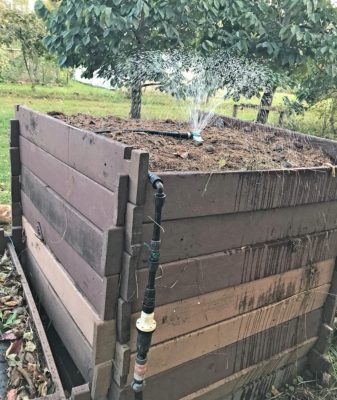 mpost? Interested in details about how to make gourmet compost? This is a reminder that on Wednesday, September 23, 2020 from 7-8:30pm EST, I’ll be hosting a webinar about composting. For more information and registration, go to https://leereich.com/workshops.
mpost? Interested in details about how to make gourmet compost? This is a reminder that on Wednesday, September 23, 2020 from 7-8:30pm EST, I’ll be hosting a webinar about composting. For more information and registration, go to https://leereich.com/workshops.
A recording of the webinar will be available for a limited time period to anyone who registers but can’t make it to the live presentation.
Kale, You’re More than Beautiful
I’m lucky enough to have a French window of two big, inward swinging panels out of which I can look over my vegetable garden every morning. Oddly enough, the garden bed that is catching my eyes these mornings for its beauty is the bed mostly of kale plants.
No, it’s not a bed of colorful, ornamental kale, not even a reddish kale such as Russian Red. I grow just plain old Blue Curled Scotch kale, which is no more bluish than any other kale, or any other member of the whole cabbage family for that matter. What catches my eye each morning is the way the curly leaves flow together like an undulating wave of verdant frilliness.
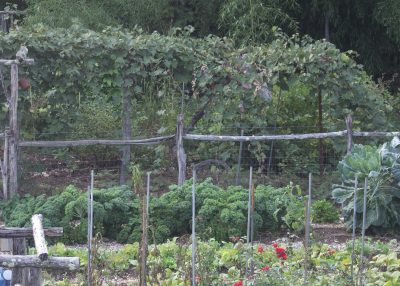
My vision could be swayed by my knowing that kale is such a healthful vegetable, being especially rich in calcium and vitamin A. Or the fact that it’s so easy to grow. I sowed the seeds in early March, set out transplants out in early May, have been harvesting it since the end of May, and will continue to do so probably well into December. (Another bed of kale, which I seeded right out in the ground at the end of May, is also looking good.)
Unlike broccoli, whose prime is past once buds open into flowers, or cabbage, which splits if left too long, kale doesn’t need to be harvested at just the right moment. It just keeps growing taller, with more leaves, if left alone.
The only thing kale needs protection from is rabbits and woodchucks, like most vegetables, and from cabbage worms. A fence and two dogs keep rabbits at bay. One or two sprays of the biological pesticide Bacillus thurengiensis, sold commercially under such trade names as Thuricide and Dipel, is all that’s needed for the worms (they’re actually caterpillars, not worms). Or nothing. Some years, damage is light enough so that no control is necessary.
What more could I ask for from a plant: good looks, good health, and good flavor?
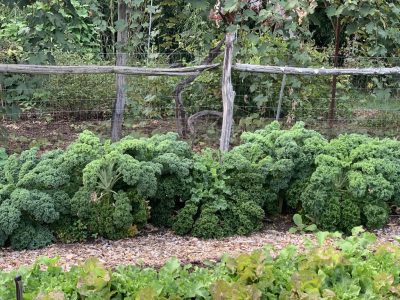
Kiss Me Over the Garden Gate
I take it upon myself to personally promote the revival of an old-fashioned flower: kiss-me-over-the-garden-gate (Persicaria orientalis). It’s big, it’s beautiful, and it’s distinctly old-fashioned.
If you know the weed called smartweed, you have a hint of what kiss-me-over-the-garden-gate looks like. Smartweed is a trailing weed, usually no more than a foot or so high, with what look like small droplets of pink dew at the ends of its stems.
Kiss-me-over-the-garden-gate looks like smartweed on steroids, the “droplets” the size of bb’s and, rather than trailing, the plant rises with robust arching stems to more than seven feet high. It’s just the right height and form for growing next to a garden gate, which is where my plants sometimes grow.
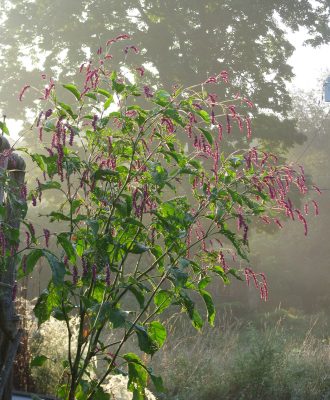
Kiss-me-over-the-garden-gate is a little hard to get started because the seeds germinate slowly and erratically. My plants thankfully live up to their reputation of being self-seeding annuals. The self-seeding plants come up more robustly than the coddled few seedlings I used to transplant each year.
Kiss-me-over-the-garden-gate’s self-seeding habit is restrained enough to keep it from being frightening. All I do each spring is weed out the few extra plants, as well as those that stray too far from my garden’s gate.
Evergreen Onions
For many years, in addition to starting onions from seed, sown in February, I also would go the more conventional route and bought a few “sets” for planting. Sets are those small bulbs that grow first to become scallions, which are mostly leaf, then go on to fatten into bulbs that can be harvested and stored.
Nowadays, instead of planting sets for scallions, I grow bunching onions, yet another type of onion, one that never ever makes fat bulbs. I’ve sown them in February for later transplanting, or directly in the garden. They always remain scallions, never bulbing up, and multiply by growing new baby plants at their bases.
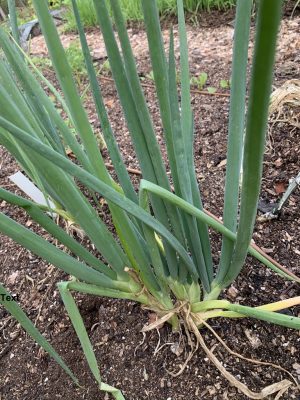
The variety I grow, Evergreen Hardy White, can allegedly live through winters here. Come spring, the plants can be divided to make more scallions for eating and for growing. (I’ve always eaten them all; this year I’ll leave some to challenge their winter hardiness.)
Tops of my bulbing onions dried down and were harvested weeks ago, but these bunching onions never cease to maintain their fresh, green scallion-y character.

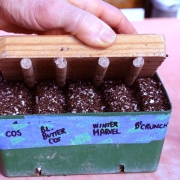
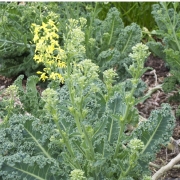

OMG. I think we had that growing in the midst of. Big forsythia patch. It was really beautiful. I do believe I posted a pic.
I will register for your compost podcast, but live in Utah. So is 7-8:30 “pm”? sure hope so, cause I don’t get up at 5AM for much anymore (retired)-Trina
Yes, “PM”. Thanks for pointing that out. I have corrected it in the post.
Leave a few Evergreen plants, not all will survive, but some will. I have a small cluster than has been overwintering for maybe half a dozen years here in Poughkeepsie. The cluster is just big enough for two fat flowers come spring.
I am an avid composter queen. Coffee grain from espresso cafe and brewers grain from brewery. Kitchen waste and garden trimmings too. This summer’s harvest was almost zilch. Plenty of flowers on zucchini, beans, tomatoes, squashes. I used bone meal at planting time.
A soil test may reveal my failure.
Toni in Arizona.
Consider also other things besides the soil, such as hot weather or too little or too much water. But also test the soil.
I harvest bunching onion “scallions” by just cutting some leaves as needed. That leaves the bulbs to keep growing and producing new leaves and they overwinter in Maine just fine. You can also let them flower and they self seed hundreds of baby plants. Either way, they do need to be dug up and divided once per year (some taken to eat as classic whole scallions) as the clumps get huge. I also grow these in flower bed areas as they are attractive plants and the garden beds are more precious real estate. I’m also trialing a kale that is supposedly perennial, but hasn’t been winter tested yet.
Good information. Thanks. My guess is that “perennial” kale will not overwinter in the usual Maine winter.